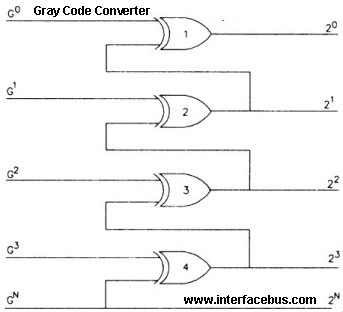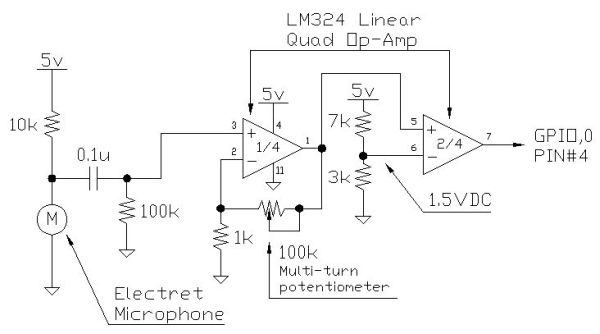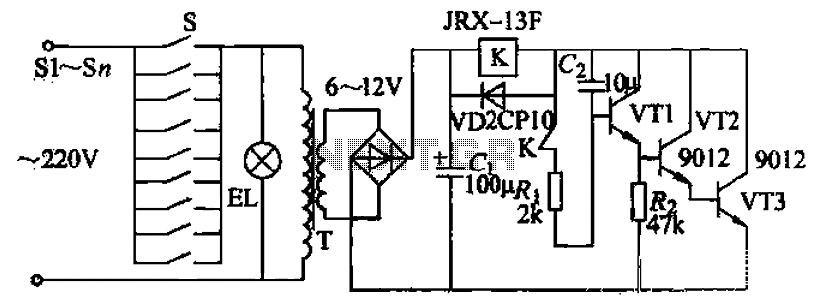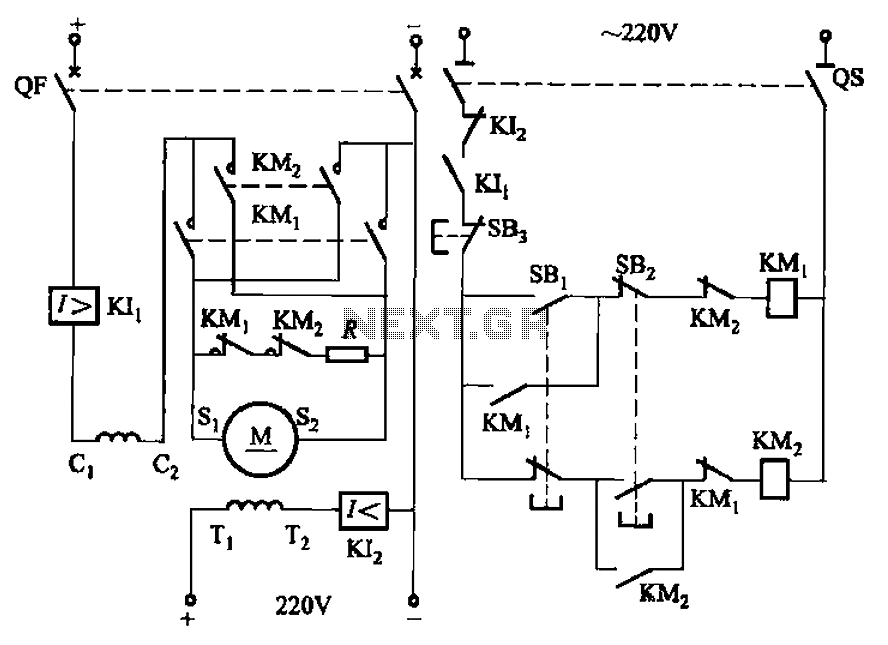
Fm Light Beam Receiver Circuit

This receiver is designed to detect infrared (IR) or light beams that are frequency modulated on a 50-kHz carrier. The transistors Q2, Q1, Q3, and Q4 form an active filter and amplifier, while the differential amplifier formed by Q5 and Q6 provides additional gain.
The described receiver circuit utilizes a combination of active components to effectively process modulated signals. The initial stage consists of transistors Q2, Q1, Q3, and Q4, which are configured as an active filter and amplifier. This configuration is essential for filtering out unwanted noise and amplifying the desired signal. The choice of a 50-kHz carrier frequency allows for efficient modulation and demodulation of the IR or light signals, making it suitable for various applications, such as remote controls or wireless data transmission.
Following the active filter stage, the differential amplifier formed by transistors Q5 and Q6 plays a crucial role in further enhancing the signal. Differential amplifiers are known for their ability to reject common-mode noise, which is particularly beneficial in environments with significant electromagnetic interference. By amplifying the difference between the two input signals, Q5 and Q6 ensure that the output maintains the integrity of the modulated information while increasing the overall gain of the circuit.
In summary, this receiver circuit is adept at capturing and processing frequency-modulated light signals, utilizing a well-structured combination of active filtering and differential amplification to achieve high fidelity and noise resilience in the output. The design is tailored to optimize performance for applications requiring reliable signal detection in the presence of potential noise sources. This receiver will pick lip IR or light beams that are frequency modulated on a 50-kHz carrier. Q2/Q1/Q3/Q4 from an active filter and amplifier and differential amp Q5/Q6 provide more gain.
The described receiver circuit utilizes a combination of active components to effectively process modulated signals. The initial stage consists of transistors Q2, Q1, Q3, and Q4, which are configured as an active filter and amplifier. This configuration is essential for filtering out unwanted noise and amplifying the desired signal. The choice of a 50-kHz carrier frequency allows for efficient modulation and demodulation of the IR or light signals, making it suitable for various applications, such as remote controls or wireless data transmission.
Following the active filter stage, the differential amplifier formed by transistors Q5 and Q6 plays a crucial role in further enhancing the signal. Differential amplifiers are known for their ability to reject common-mode noise, which is particularly beneficial in environments with significant electromagnetic interference. By amplifying the difference between the two input signals, Q5 and Q6 ensure that the output maintains the integrity of the modulated information while increasing the overall gain of the circuit.
In summary, this receiver circuit is adept at capturing and processing frequency-modulated light signals, utilizing a well-structured combination of active filtering and differential amplification to achieve high fidelity and noise resilience in the output. The design is tailored to optimize performance for applications requiring reliable signal detection in the presence of potential noise sources. This receiver will pick lip IR or light beams that are frequency modulated on a 50-kHz carrier. Q2/Q1/Q3/Q4 from an active filter and amplifier and differential amp Q5/Q6 provide more gain.





